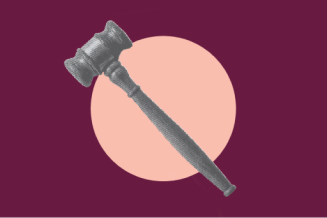Suppression of Photographers During Civil Rights Movement an Important Reminder for Today


I recently wrote about violations of free speech in the civil rights movement and how the First Amendment’s strong speech protections are critical for minorities, the powerless, and those trying to change the world. One element I did not discuss was the importance of photography as a check against majority power and oppression. Indeed, the contours of today’s battles over the First Amendment rights of photographers can also be seen in the movement’s history.
In March 1963, for example, after police in Greenwood, Mississippi, allowed their dog to bite the Black pastor of a local church as he was peacefully walking along the sidewalk as part of a voter registration effort, police seized the film of a CBS cameraman who had captured the incident. (The photo of a similar attack the following May in Birmingham would later become famous.)
In 1965, a nighttime march by 400 protesters in Marion, Alabama, was attacked by law enforcement officers. As network news crews rushed to ready their cameras, officers knocked out streetlights, destroyed reporters’ cameras, sprayed their lenses with black paint, and, in some cases, simply clubbed them. Not captured on camera that night were assaults that sent 10 Black men to the hospital (the one hospital that would treat them), including a man named Jimmy Lee Jackson who died of two police gunshots to the stomach.
Jackson’s death helped inspire the famous Selma to Montgomery marches later that year. As hundreds of peaceful Black marchers were beaten by police and possemen on “Bloody Sunday,” a White man named Dan Doyle was on the sidewalk taking pictures, and the attackers beat him and stole his camera. Photographers were frequent targets of white mobs throughout the civil rights movement. (However, Dolye was actually an FBI agent, and despite the wonton carnage, the men who beat him were the only ones to be jailed that day—with the federal charges later dropped because of the embarrassing optics of that fact.)
Alabama Governor George Wallace, who had personally overseen strategy for the state's response to the Selma march, had told his advisors, “I'm not going to have a bunch of niggers walking along a highway in this state as long as I'm governor.” But his aides recognized that the violence was a public relations disaster. There was “too much film.... Just too much film,” one kept repeating in the aftermath.
Photography was also used offensively by the police, as a means of seeking to intimidate protesters by recording them (as I discussed here). After the bloody outcome of the first attempted Selma march, the government finally sent thousands of federal troops to protect the marchers. On the second, federally protected march, one activist snapped this ominous photo of an Alabama state trooper filming him:

Trooper filming Selma march, 1965. Photo by Alfred M. Loeb; used by permission.
In the 1960s, cameras — especially motion picture cameras — were expensive and bulky and relied on wet film to record images and on the news judgment of editors at newspapers and the three corporate television networks to distribute them. Today, everyone has a high-quality motion-picture camera in their pocket and can distribute images to the world in an instant online. Nevertheless, it’s clear that the essential shape of the power struggles around cameras has not changed: who can film whom and when and who gets to control the pictures and who views them.
In the end, of course, photography was absolutely critical to the success of the civil rights movement. Without it, outside pressure might never have been brought to bear on southern states intent on continuing to oppress their Black citizens through the omnipresent threat of violence. Images of firehoses, police beatings and dog attacks, bombings, and other examples of that violence put the issue before a larger American public in a way they couldn’t ignore — a public that beforehand had been some mixture of ignorant, supportive, indifferent, and resigned to the treatment of Blacks in the south.
Very much the same thing is happening today. Police violence against Black Americans has been a problem for a very long time — Martin Luther King talked about it — but we have only seen the emergence of the Black Lives Matter and other expressions of a new focus on this problem in the last few years. There’s a very good argument that a principal reason is what I have called the “video revolution in policing” — that, as my colleagues Dennis Parker and Lee Rowland put it, “the onslaught of repeated, searing images of police shooting unarmed people of color” has left “no plausible deniability about the reality of being policed while Black in America.”
This is one reason why ACLU lawyers around the country have been fighting over the past decade in numerous lawsuits against attempts by police officers and others to stop people from recording. As during the civil rights movement, today's authorities also recognize the consequences of “too much film.” But with a camera in nearly everyone's pocket, there's more film than ever and, under our Constitution, no stopping it.


